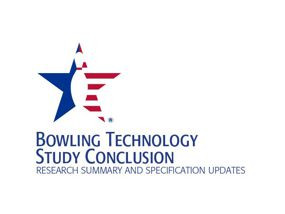USBC sets new specifications for bowling balls
- Posted on
- Posted in bowlingball, drilling, rules, usbc

With the recent USBC changes taking effect in 2020, there are a few things you all need to know to prepare yourself for what is to come. In times like these, education is a must, and I don’t think you can start soon enough.
ARLINGTON, Texas – After reviewing feedback from industry partners, the United States Bowling Congress Equipment and Specifications Committee has revised the implementation dates for the new bowling ball specifications announced earlier this year.
The Equipment and Specifications Committee determined the specification allowing increases in static weights for bowling balls without balance holes will begin this fall to allow for a smoother transition for bowlers.
Starting Aug. 1, 2018, bowling balls weighing more than 10 pounds will be allowed to have up to three ounces of static side, thumb or finger weight and up to three ounces of top or bottom weight, provided the ball does not have a balance hole.
Bowlers still can have a bowling ball with a balance hole until Aug. 1, 2020, but any balls with a balance hole must stay within the current static weight specification of one ounce for finger, thumb or side weight, and three ounces for top or bottom weight.
The specification eliminating the use of balance holes still will go into effect Aug. 1, 2020.
“After hearing from all stakeholders, the committee decided it was the right move to make the static weight specification an option starting this fall,” Andrew Cain, chair of the USBC Equipment and Specifications Committee, said. “Bowlers now have a two-year window to work with their pro shops to ensure their equipment will meet specifications on Aug. 1, 2020.”
With the elimination of balance holes as of Aug. 1, 2020, bowlers may have up to five holes for gripping purposes and all gripping holes must be used on every delivery. A bowler who chooses not to use a thumb hole would need to mark by scribe, engraver or tool their intended center of palm with a plus (+) mark to indicate their grip orientation.
Bowlers who do not use their thumb for delivery and decide to use the higher static weight specification cannot have a thumb hole – it would be classified a balance hole – and immediately will be required to follow the specification requiring them to mark their intended center of palm.
The USBC Equipment and Specifications Committee did decide the gripping rules that become effective Aug. 1, 2020, will have an exception for house balls, for bowlers who use house balls and might not have the strength to use all gripping holes.
House balls are defined as balls supplied by the center where the competition is taking place, have a polyester or basic urethane cover, a differential RG of less than 0.025 inches and the ball is not specifically drilled to fit the bowler.
The dates for implementing the new specification for the oil absorption rate of bowling ball coverstocks do not change. The initial step on the oil absorption specification will begin Aug. 1, 2018, when bowling ball manufacturers are required to submit oil absorption data as part of the USBC bowling ball approval process. The specification requiring a bowling ball’s oil absorption rate to be more than 2 minutes, 15 seconds (2:15) for the ball to be approved will take effect Aug. 1, 2020.
However, because all current bowling balls will be grandfathered in regardless of oil absorption rate, the Equipment Specifications Committee determined the production of balls that do not meet the 2:15 oil absorption time limit must be stopped as of Jan. 31, 2022.
The new bowling ball specifications announced in April were designed to sustain the playing field both currently and in the future.
The Equipment and Specifications Committee has delegated authority from the USBC Board to make changes to equipment specifications.
Visit BOWL.com/EquipAndSpecs for more about the specification changes.
